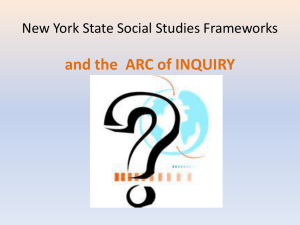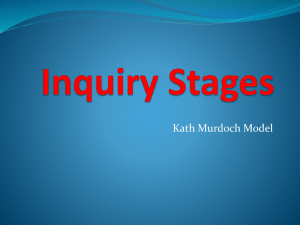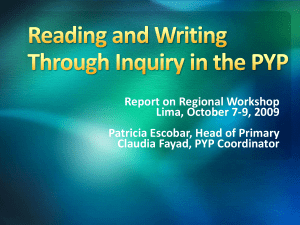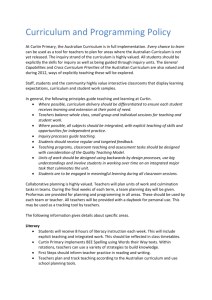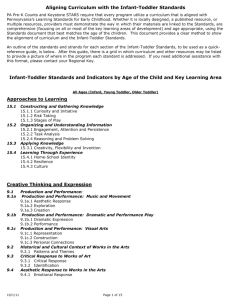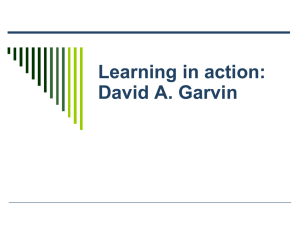Weeks 6 & 7 Summary
advertisement
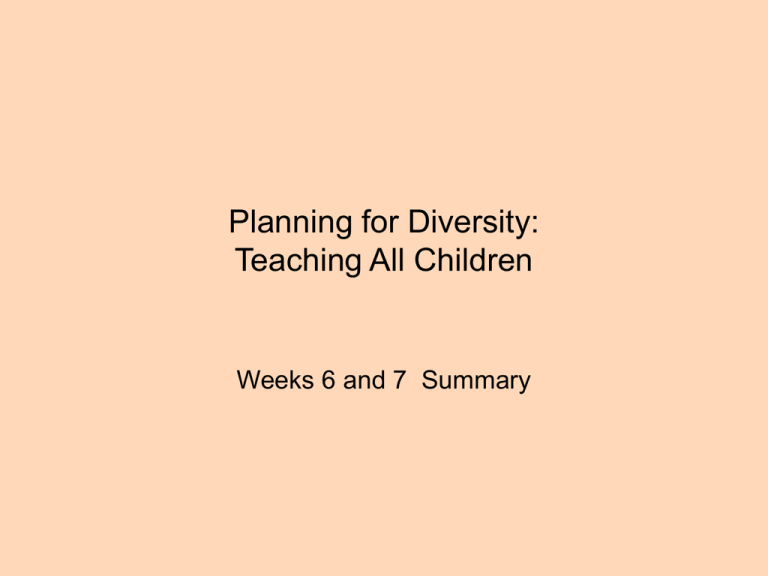
Planning for Diversity: Teaching All Children Weeks 6 and 7 Summary Diversity and its Origins Diversity and Stability The need for continuity and stability in cultural practices is well explained by Tomasello (1999): The process of cumulative cultural evolution requires not only creative invention but also, and just as importantly, faithful social transmission that can work as a ratchet to prevent slippage backward -- so that the newly invented artifact or practice preserves its new and improved form at least somewhat faithfully until a further modification or improvement comes along. (p. 5) Clearly, a proper balance is needed between Diversity and Stability. THINKING ABOUT DIVERSITY IN SOCIETY Diversity cannot be an attribute of an individual. It can only refer to the differences between individuals within a group. So used, it can apply to: a classroom; a school; a city; a country. Diversity does NOT imply inequality. There is no absolute point of reference in terms of which some members of a group can be judged superior and others inferior. Seen in this light, all groups are -- to varying degrees -diverse. And all groups, by the same token, are to varying degrees homogeneous. Diversity: Individual Trajectories Who we become depends on the company we keep and what we do together Consider the different cultural groups you have been part of: Do you have one or more older siblings or close cousins? In your family, do you speak any language in addition to English? Did you grow up in a large city, small town or rural community? In what sort of work are your parents and other family members engaged? Have you attended an ‘alternative’ school of any kind? What extra-curricular activities or out-of-school organizations have you engaged in? Have you spent a month or more living outside the United States? What subject do you intend to major in? How has your participation in these different communities affected who you have become? How are you similar to or different from other people of your age? How might your trajectory have been different? Constraints Children develop at different rates; some come to school more attuned to and prepared for schooling, as currently conceived and practiced, than others. Many educated and economically successful parents demand the “best” academic preparation for their children and willingly provide additional financial support for their children’s schools. Federal Government ‘No Child Left Behind’ Act calls for minimal skills and knowledge to be acquired by all students at any given grade level. School Districts differ in the proportions of children with the greatest needs: poverty; limited/poor community facilities; English Language Learners; etc. School Districts differ in their funding from taxes - suburban v. inner city v. rural. Many well qualified teachers prefer not to teach in inner city or rural schools. Equal Opportunity What does “equal opportunity” entail? • Does it mean equal resources for every student? • Or the same expectations and the same curriculum for every student? • Or the resources and support to enable every student to achieve her/his potential? APPROACHES TO DIVERSITY IN EDUCATION A problem – to be overcome, typically by organizational means. The avowed aim is assimilation into a homogeneous society. In practice, it typically results in differential expectations and differential treatment: e.g. pull-out classes, tracking, acceptance of social segregation. An inescapable reality – to be accommodated, as far as possible, within existing practice. Token recognition by reference to cultural stereotypes and celebration of holidays and foods. Both resource and outcome – to be welcomed and encouraged as means of achieving deeper understanding, both in the present and in solving problems as yet unforeseen. We should choose the last of these. How should we respond to Diversity? How can we engage ALL students in learning? Select themes or issues of personal and social relevance that provoke questions that call for investigation Choice and ownership lead to commitment Open ended questions stimulate inquiry, active exploration, and discovery. Collaboration with others generates more ideas Dialogue about results deepens understanding Individual representation (writing, diagramming, etc.) encourages reflection Students learn best in a receptive, nonjudgmental, community environment that encourages inquiry and independence includes a wide variety of materials provides opportunities for practical activities is generally complex connects school experience with the greater world encourages collaboration rather than competition values extended expression of individual understandings and beliefs welcomes the constructive exploration of disagreement Center for Research on Education, Diversity and Excellence http://www.crede.ucsc.edu/ Communities of Inquirers/Learners The emphasis on establishing communities of … practice builds on the fact that robust knowledge and understandings are socially constructed through talk, activity and interaction around meaningful problems and tools (Vygotsky, 1978). The teacher guides and supports students as they explore problems and define questions that are of interest to them. A community of practice also provides direct cognitive and social support for the efforts of the group’s individual members. Students share the responsibility for thinking and doing: they distribute their intellectual activity so that the burden of managing the whole process does not fall on any one individual. In addition, a community of practice can be a powerful context for constructing [scientific] meanings. In challenging one another’s thoughts and beliefs, students must be explicit about their meanings; they must negotiate conflicts in belief or evidence; and they must share and synthesize their knowledge to achieve understanding. (How People Learn, pp.183-4) Plan for: Classroom Meetings Negotiation of Themes and Inquiries Presentation to Real Audiences Reflective Discussion Learning for Understanding Understanding occurs through: is shown in: using knowledge to carry out some new and challenging activity in order to achieve some desired outcome in a particular situation. Generative Topics: Themes that connect to students’ lives, stimulate inquiry, provoke discussion. Goals for Understanding: “Big ideas”, important concepts, necessary skills, connections and implications. Performances of Understanding : Activities that use knowledge for meaningful purposes, practical and intellectual. Ongoing Assessment: Provide criteria, give feedback and support, encourage reflection. Summative Assessment: A ‘performance of understanding’ that requires students to draw on what they have understood to meet some new challenge. (based on Project Zero Framework) Designing a Curriculum Unit THEME (A Way of Orienting Curriculum Content to Students’ Lives and Interests e.g. Community, Exploration, Water) “Big Ideas”/”Enduring Understandings” (see Curriculum Standards) Activities (that Allow for Inquiry, Dialogue) Check with Principles Launch-----Questions -----Research Performance of Understanding <---> Assessment Reflection


